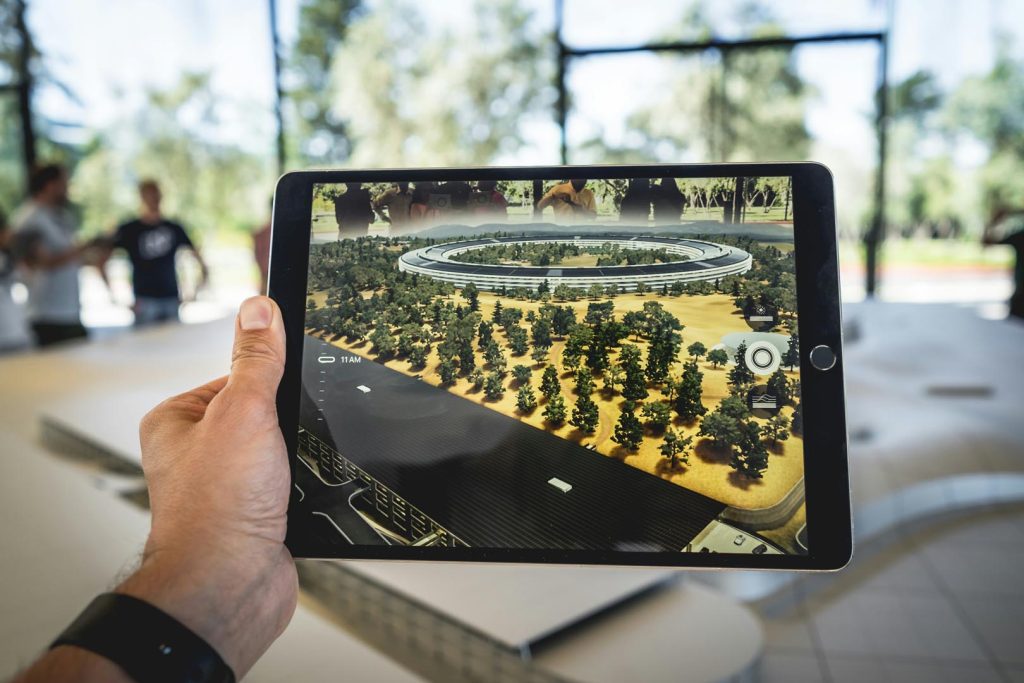Virtual /
Augmented
Reality Platforms
Virtual / Augmented Reality Platforms
Deploying a project to implement virtual reality (VR) and augmented reality (AR) platforms involves several key steps, from initial planning and assessment to development, testing, and full-scale deployment. Here´s a comprehensive guide to help you through the process:

1. Define Objectives and Vision
- Establish Clear Objectives
Identify the specific goals of implementing VR and AR platforms (e.g., training, marketing, product design, customer experience).
Align these objectives with the overall strategic goals of the organization. - Create a Vision Statement
Develop a vision that articulates the purpose and anticipated impact of the VR and AR platforms.
Ensure this vision is communicated clearly to all stakeholders.
2. Assess the Current State
- Technology Assessment
Evaluate the current technological infrastructure to determine what upgrades or changes are necessary to support VR and AR platforms.
Assess the availability and readiness of hardware (e.g., VR headsets, AR glasses, compatible devices) and software. - Stakeholder Analysis
Identify key stakeholders and understand their requirements and expectations.
Gather input from departments that will be using the VR and AR platforms.
3. Develop a Strategy and Plan
- Use Case Identification
Identify specific use cases where VR and AR can add value (e.g., immersive training simulations, virtual tours, AR-enhanced customer support).
Prioritize use cases based on their potential impact and feasibility. - Vendor and Technology Selection
Research and select appropriate VR and AR technologies and platforms.
Evaluate vendors based on factors such as technology compatibility, cost, support, and scalability. - Budget and Resource Planning
Develop a detailed budget that includes costs for hardware, software, development, training, and maintenance.
Allocate necessary resources, including personnel and technology, for the project.

4. Development and Integration
- Pilot Program
Start with a pilot program to test the feasibility and effectiveness of the VR and AR platforms.
Select a specific use case for the pilot and gather feedback from users. - Custom Development
Develop custom VR and AR applications tailored to the identified use cases.
Work with developers and designers to create engaging and effective VR/AR experiences. - Integration with Existing Systems
Ensure the VR and AR platforms integrate seamlessly with existing systems (e.g., Learning Management Systems, CRM, ERP).
Test the integration to identify and resolve any compatibility issues.

5. Implementation Plan
- Timeline and Milestones
Develop a detailed project timeline with specific milestones and deadlines for each phase of the project.
Include key activities such as development, testing, training, and rollout. - Training and Support
Provide comprehensive training programs for employees to ensure they are comfortable using the new VR and AR platforms.
Offer ongoing support and resources to address any issues that arise.
6. Testing and Evaluation
- User Testing
Conduct extensive user testing to gather feedback and identify areas for improvement.
Use beta testing phases to refine the VR and AR applications. - Performance Metrics
Define key performance indicators (KPIs) to measure the success of the VR and AR platforms (e.g., user engagement, training effectiveness, customer satisfaction).
Use analytics tools to track and report on these metrics.
7. Full-Scale Deployment
- Rollout Strategy
Develop a rollout strategy for deploying the VR and AR platforms across the organization.
Implement in phases if necessary, starting with departments or locations most ready for the technology. - Communication Plan
Communicate the launch of the VR and AR platforms to all stakeholders.
Highlight the benefits and provide instructions on how to access and use the new technology.
8. Monitoring and Continuous Improvement
- Continuous Feedback Loop
Establish a process for continuous feedback from users.
Use regular surveys, feedback sessions, and data analysis to gather ongoing input. - Iterative Improvements
Regularly review performance data and make necessary adjustments to improve the VR and AR experiences.
Stay updated with advancements in VR and AR technology to incorporate new features and enhancements. - Maintenance and Updates
Plan for regular maintenance and updates to ensure the VR and AR platforms remain functional and effective.
Address any technical issues promptly to minimize disruption.
With Business Interchallenge you can successfully implement VR and AR platforms, enhance user experiences, and achieve the desired business outcomes.